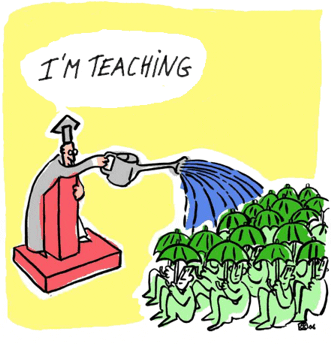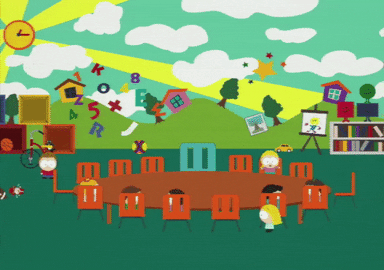“[Curriculum for Excellence] is designed to provide the breadth and depth of education to develop flexible and adaptable young people with the knowledge and skills they will need to thrive now and in the future. It aims to support young people in achieving and attaining the best they possibly can.” (Education Scotland, No Date)
The new curriculum in Scotland is based entirely around active learning, focusing on how children learn, not just what they learn. This is key to get the best from every child, and the definition of active learning. The question is, how do we go about this?
Well, to begin with, you can’t just shower someone with information. Imagine sitting in your lecture and just having to listen for 2 hours, no discussions, no take a moment to think, not even a chance to reflect. You just have to sit, listen and somehow retain… 
What you teach should be relevant and meaningful. I know for myself, when I understand why I need to know something, it is easier for me to understand what I have to do. I also find it easier to learn in a hands on way, where I can actually learn how to do something whilst doing it. This allows me to see the benefits of what I am doing and also get to put two steps together rather than just learning and remembering then later on doing.
Maria Montessori (1870-1952) believed the same in many ways. She believed in an education which can emphasise individuality and independence in learning. Children are known to be curious creatures, ready to explore and learn from what they find. This is why active learning is so important, as it works coherently with each child’s own development in a holistic way.
Active learning is not only about the content that each child is learning, but also about the process. It teaches children to become lifelong learners as they have control over their own learning. This gives everyone a better chance after school as they go through life, learning on their own.
Most importantly of all, active learning is fun. It draws each child’s attention to their learning rather than their phones. There isn’t room for boredom when you’re making a bottle greenhouse or a model volcano. 
With active learning, another thing to look into is cooperative working. This is something everyone needs to know, whether you be a child or adult. As a teacher it is about how you work with your class, however as a student it is how they work and learn together. Cooperative learning aids class discussions, benefits the class to come together and share ideas and helps to develop original thoughts allowing the class to have a stronger knowledge of a subject.
If a class can work together effectively, it means they can work as a team, this can become useful in building the relationships of the students in the classroom. Teamwork also has individual benefits, not only helping for their future but also developing their communication skills, collective effort and even the difficult skill of compromising.
Looking through all of this, we can now go on and hopefully have a full class excited and ready to learn in the classroom!



